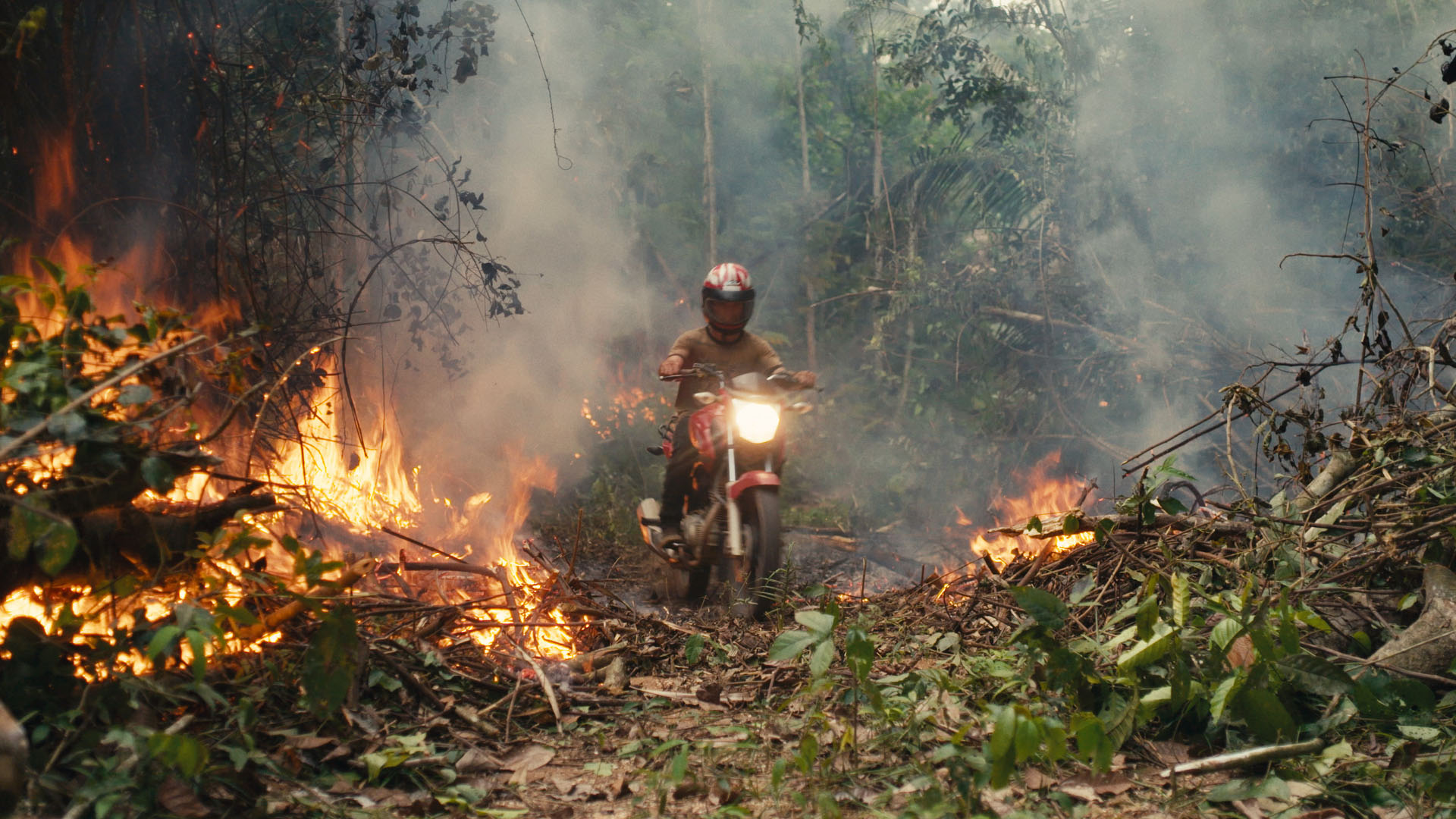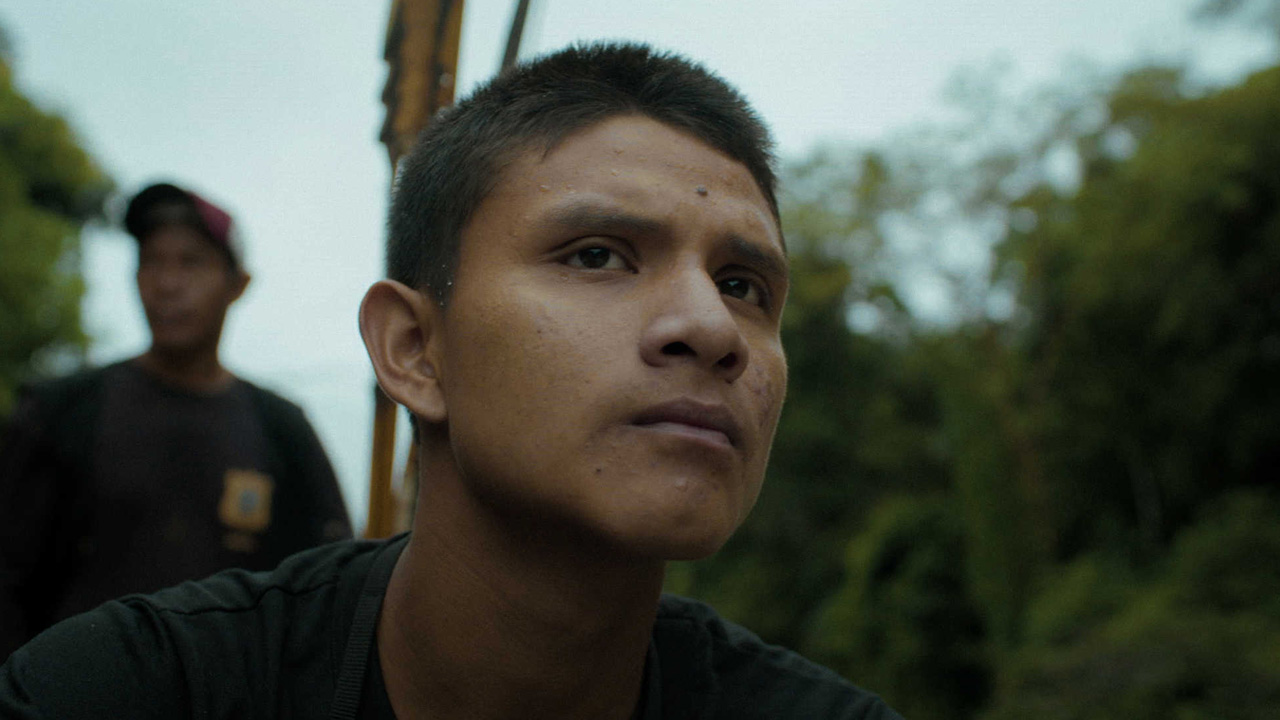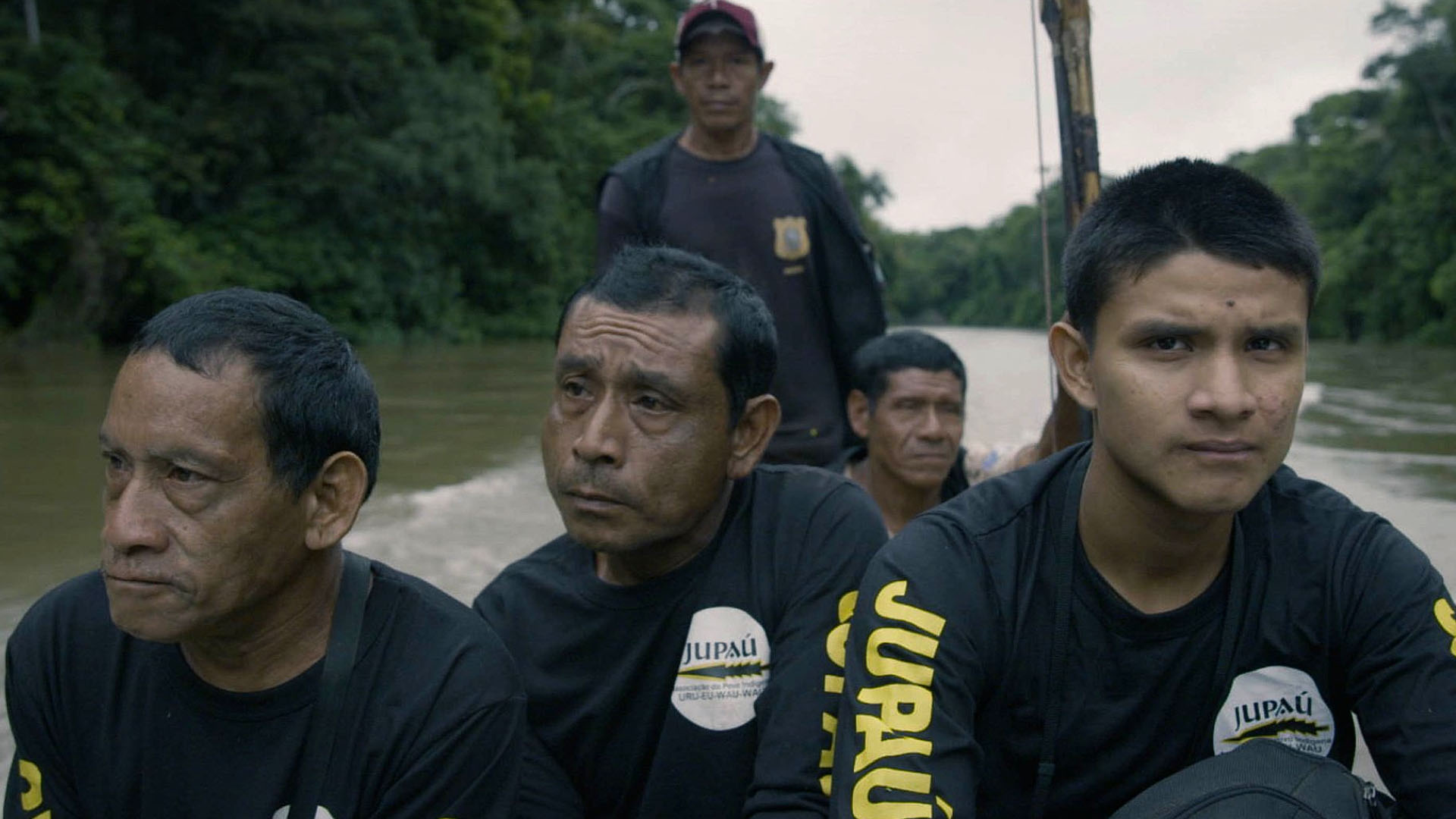Filmmaking becomes a vital tool of Indigenous resistance in The Territory
The perseverance of the Uru-Eu-Wau-Wau is integral to the struggle toward enduring and sustainable futures.

Gripping documentary The Territory follows an Indigenous community trying to protect their land from illegal settlement and destruction in Brazil. It’s a riveting and tense watch, says Awatea Mita, multi-layered and humanising and benefiting from a participatory filmmaking model.
Through participatory filmmaking, The Territory is a film that becomes a vital tool in the struggle for indigenous resistance. This multiple award-winning documentary follows the Uru-Eu-Wau-Wau people, navigating the indifferent systems of the Brazilian government, and illegal settlement on their lands by farmers. The stakes are high, and the odds are overwhelmingly against them. Riveting and tense, the audience is brought to the understanding that the perseverance of the Uru-Eu-Wau-Wau is integral to the struggle toward enduring and sustainable futures.
Alex Pritz’s cinematography initiates viewers into the biodiverse ecosystems of the Amazon. The beautiful world of the colourful and delicate wildlife is oblivious to the impending doom that threatens their environment. The pristine forest protects and nurtures the lives of all that live beneath its canopies. Zooming out, the audience bears witness to the encroachment of ominous urbanisation and expanding farmland, incongruously overlaying the natural world. Thus, “an island of rainforest surrounded by farms,” is exclaimed through Pritz’s lens.
The Uru-Eu-Wau-Wau are not passive subjects, and during the filmmaking process COVID-19 becomes a growing threat to them and the crew. To reduce the risk of spreading the disease, the filmmakers relied on the involvement of the Uru-Eu-Wau-Wau to tell their own stories. Indigenous title acknowledges their sovereignty over nearly two million hectares in the Brazilian state of Rondônia—through the continuous and uninterrupted occupation of their territory, they lived a seamless co-existence with the environment.
This changed in 1981 when two worlds collided; the Indigenous Uru-Eu-Wau-Wau and the Western world became aware of one another. By default, from that point on, the struggle for survival and preservation of their homelands becomes essential to the existence of the Uru-Eu-Wau-Wau.

Emphasising political currents, the documentary includes the victorious election of Jair Bolsonaro. His landslide victory saw Brazilians flooding into the streets to celebrate. One of the central characters, mother and activist Neidinha Bandeira, can only watch on in frustration as Bolsonaro promises to erase Indigenous title. When the spectre of illegal settlements on lands belonging to the Uru-Eu-Wau-Wau draws nearer, her pleas to government officials to intervene are largely dismissed. Through Neidinha’s courage, the dangers of her environmental and indigenous activism are laid bare. With scarce resources and support, her unrelenting bravery is a wellspring of hope. Her triumph of the human spirit, however, also comes at a cost.
The main protagonist is Bitate, a young man of the Uru-Eu-Wau-Wau. In the context of Bolsonaro’s election win, he looks to his elder contemplating the extinction of his people. When tragedy befalls the Uru-Eu-Wau-Wau. Bitate takes on the mantle of leadership at a mere 20 years of age. Despite questioning his ability, Bitate must lead his people in defence of their lands and the uncontacted tribes that still call the forest their home.
The ever-present threat of violence may remind audiences of When Two Worlds Collide, which documented Peruvian massacres in the Amazon. However, The Territory tells a very different story, multi-layered and humanising by acknowledging the complexities. The illegal settlers are poor farmers that exist in the extremes of a spectrum determined by big business agriculture, and while the conscience of the documentary is firmly situated with the Uru-Eu-Wau-Wau, the situation of the farmers is presented with some sympathy.

The ideologies of the two groups are opposed—farmers want the freedom to use land for the cultivation of crops and to keep livestock. Their hopes are to break free from the monopolies of big business. They want a home and livelihood for their families and to grow communities. The Uru-Eu-Wau-Wau want to preserve the environment with the understanding that the Amazon is a lifeline for the global community. They want to live in a way that honours their ancestors, where every member has a role and is not discarded.
Despite their differences, on another level, both sides want the same thing; a safe place for their families. On Uru-Eu-Wau-Wau land, however, it is their rights and sovereignty that must be respected.
At the height of hostilities, the young people of the Uru-Eu-Wau-Wau advance the resistance to encroachment with an innovative approach—they embrace technology. Originally a makeshift response to COVID-19, this soon became a participatory filmmaking project. Armed with drones, cameras and walkie-talkies, the Uru-Eu-Wau-Wau weapons of choice convert their modest efforts into a more sophisticated operation, and subsequently the filmmakers became more reliant on the Uru-Eu-Wau-Wau coverage.
Rejecting the option of direct violence in favour of surveillance teams, the Uru-Eu-Wau-Wau do more than observe from afar, putting themselves at risk to gather evidence of the crimes taking place on their lands. Instead of a polarising approach, their smart strategies gather momentum for their cause and collate proof that requires government agencies to intervene.

The Territory begins as a pressure cooker that eventually finds a safety valve. A course is plotted through a participatory model for filmmaking guided towards social change and the philosophies of the Uru-Eu-Wau-Wau are combined with activism and the tools of their would-be narrators. The filmmakers in their own journey to empower the Uru-Eu-Wau-Wau, empower themselves through the understanding that more is achieved through collaboration.
Rejecting a one-sided storytelling approach leads to a cartography of understanding—the illegal settlers and the Uru-Eu-Wau-Wau oppose each other because of a common enemy that reproduces hierarchies of economy. The Uru-Eu-Wau-Wau remind us that pathways to peaceful resolutions are a choice and that liberation can be creatively co-designed. Overcoming insurmountable odds and adversity provides a fertile ground for transformation and making the impossible… possible.























